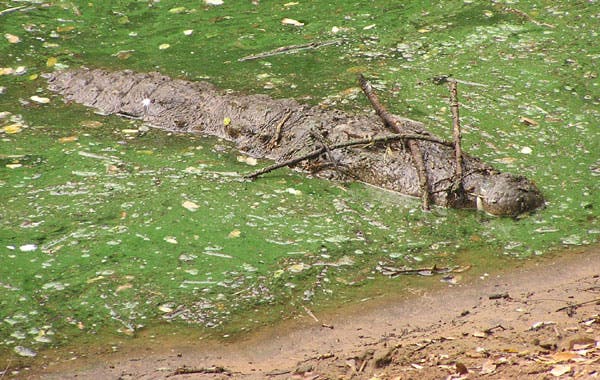- Two distinct groups of crocodilians have been reported to use tools for hunting
- They balance sticks on their snouts, baiting birds who want to use the sticks for nests
- Crocodiles actively search for the sticks (which are usually rare) and do this more often during the birds’ mating season

It’s been known for quite a while that the usage of tools isn’t restricted to humans. Monkeys (of course) also use tools, but this type of behavior has also been reported in other species, including crows, dolphins, elephants and otters. Now, a new study has reported that crocodiles and alligators also use sticks to attract prey.
In recent years, reptile research has provided some stunning results, showing that they are not only cold-blooded efficient killers, but that they exhibit a myriad of remarkable behaviors. Play behaviour, complex social interactions, gaze recognition, pair-bonding and monogamy, social hunting, speedy learning abilities and good memories – they have all been reported in reptiles.
Now, another very interesting unexpected adaptation has been demonstrated across these groups: tool usage.
As described by Dinets et al. (2013), Mugger crocodiles Crocodylus palustris in India and American alligators Alligator mississippiensis in the USA have been observed to lie, partially submerged, very close to birds they want to hunt, with sticks balanced carefully on their snouts. Birds want to take the sticks to use them in their nests and… let’s just say it usually has a very bad ending for the birds.
But what’s remarkable is that this occurrence of stick usage by crocodilians isn’t random! Stick displaying took place consistently more often with crocodiles living closer to rookeries, and it also took place more often during mating season – when birds are more inclined to construct nests. It’s also noteworthy that sticks are pretty rare in this type of environment – the reptiles actively search for them, especially during the birds’ mating period.
Baiting behavior was demonstrated before in archosaurs (the big group of species which includes crocodiles, birds and all extinct dinosaurs). Green herons (Butorides virescens) often do it: they use feathers, twigs and even berries and bits of bread to attract fish, while burrowing owls (Athene cunicularia) use mammal dung to attract dung beetles. Also, anecdotal reference suggests that crocodiles also use fish fragments to attract birds. But the fact that this has been consistently reported in two separate groups seems to suggest that this type of behavior is mainspread.
If you think about it, crocodiles have been around for over 70 million years – since the Cretaceous. They are incredibly well adapted to the environment, being able to live as scavengers and survive for months without food. They can even go into a state of hibernation when conditions aren’t favorable, waking up when things are looking up. So it makes sense that they learned a trick or two about hunting.


